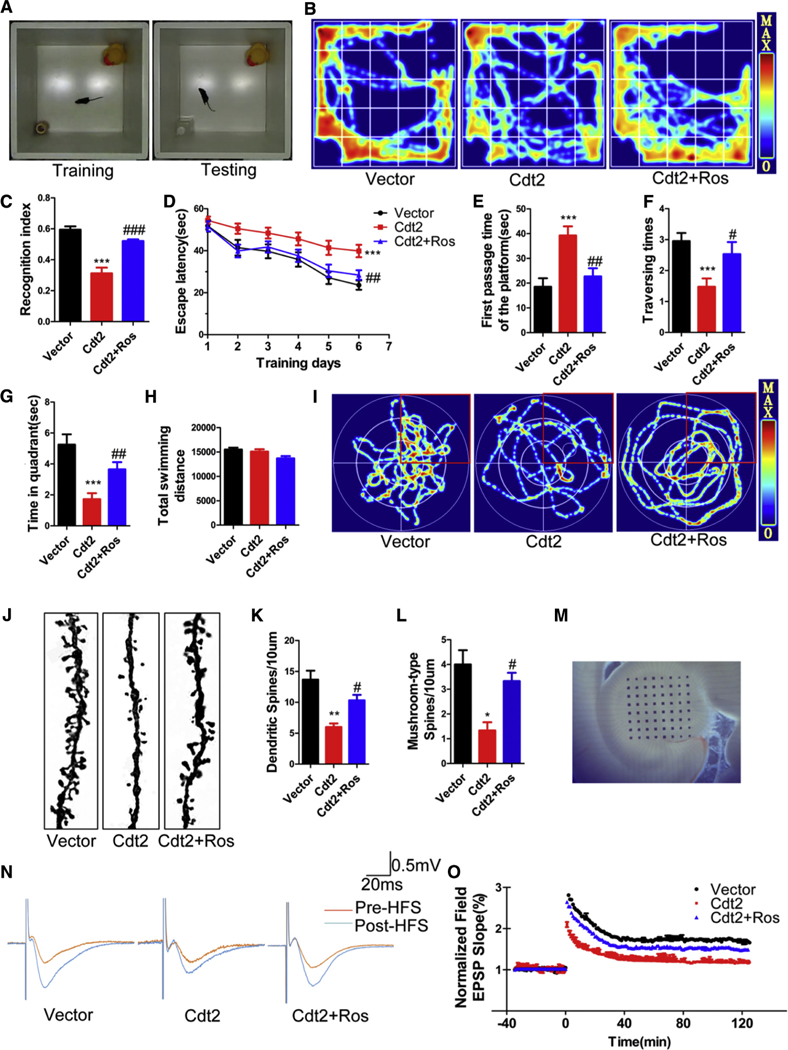Fig. 5.

CDK inhibition rescues CDT2-induced AD-like cognitive impairments. Impact of overexpression of DTL and its coding protein CDT2 on AD susceptibility, AD behavior, and synaptic regulation was assessed through the injection of AAV2-CDT2 into the entorhinal cortex of wild type C57BL/6J mice. (A) The novel recognition index (calculated as the time spent exploring the new object divided by the time spent exploring both objects) in AAV2-CDT2 mice significantly decreased compared with the control animals. (B and C) Inhibition of CDKs by roscovitine recovered the defects induced by CDT2. (D) AAV2-CDT2 mice had a marked deficit in finding a hidden platform compared with the control animals during the training days using the Morris water maze test. (E) AAV2-CDT2 mice had significantly increased latency in the probe trial. (F) AAV2-CDT2 mice traversed less frequently. (G) AAV2-CDT2 mice spent less time in the target quadrant. (H and I) The total movement distances the three groups traveled were comparable. (J) Overexpressed CDT2 significantly reduced spine density and mushroom type, by contrast, inhibition of CDKs by roscovitine recovered these defects. (K) Quantification of spine density in (J). (L) Quantification of mushroom type in (J). (M) Overexpressed CDT2 substantially decreased the field excitatory postsynaptic potential slope. (N and O) Roscovitine rescued the damage or sabotage in the synaptic plasticity induced by overexpressed CDT2. All data represent mean 6 SEM. * P < .05; ** P < .01; ***, P < .001, versus vector control. # P < .05; ## P < .01, versus Cdt2; ###, P < .001.
